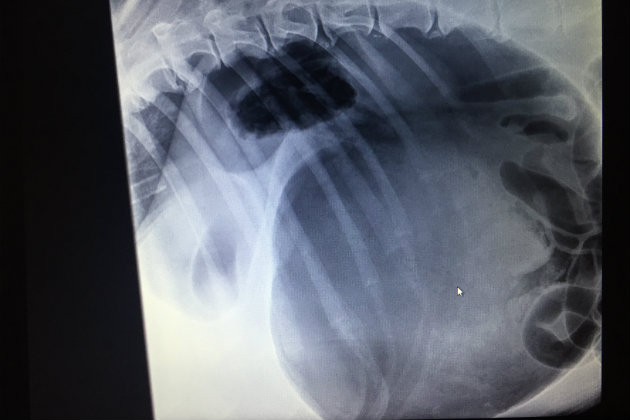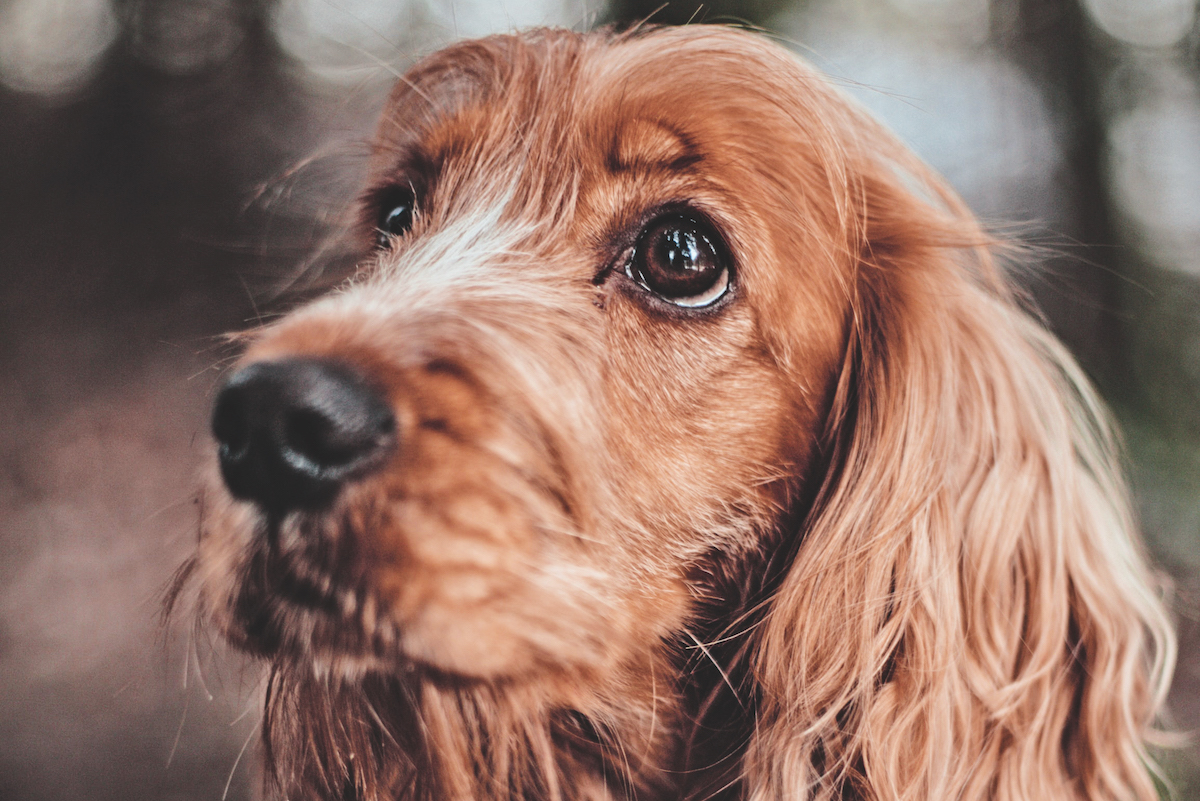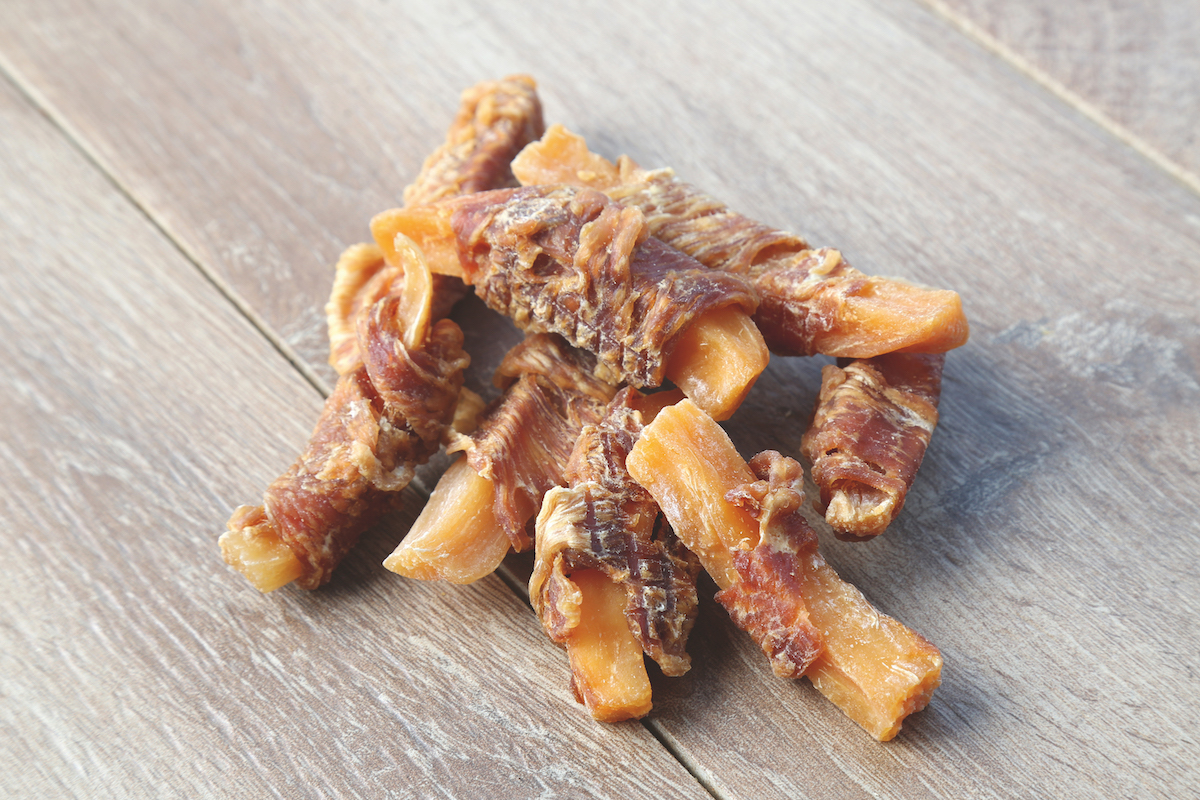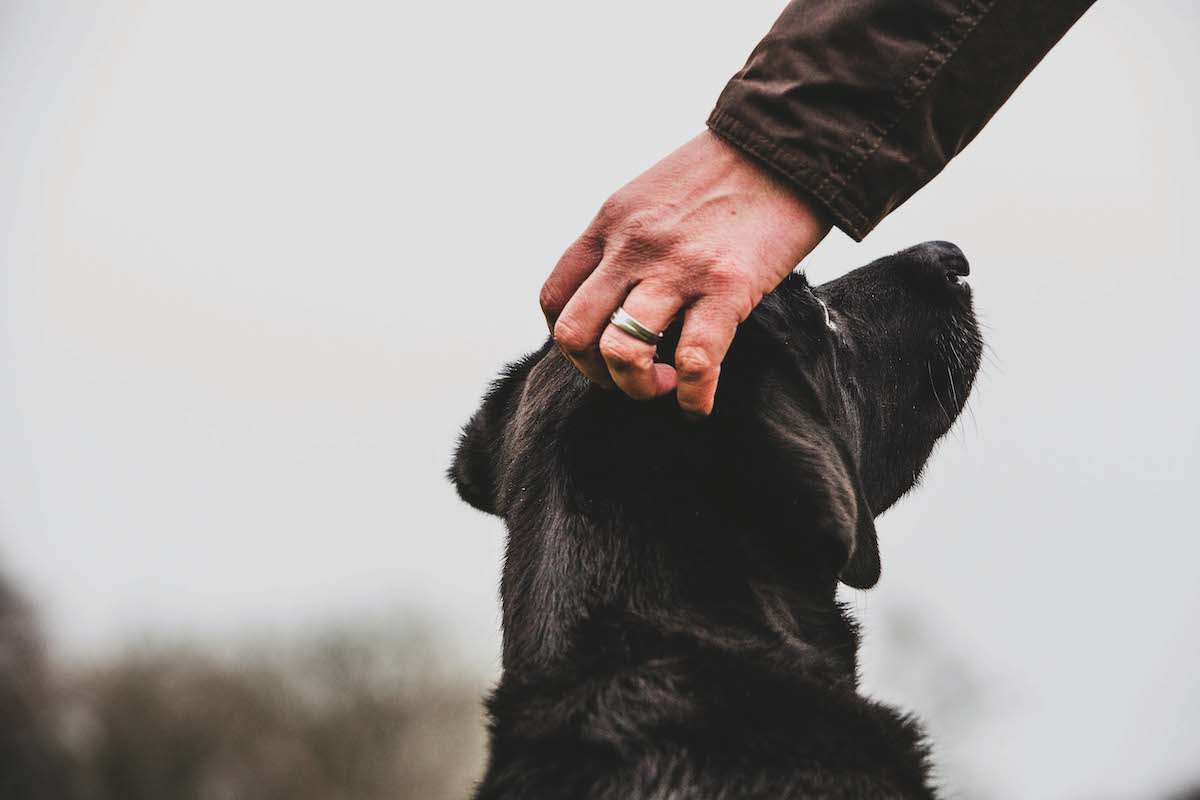Bloat in dogs: what causes it and how to avoid it
Tony Buckwell gives some valuable advice about this potentially life threatening condition

X ray of bloat in dogs (GDV)
Gastric distension (bloat) and gastric dilation volvulus (GDV) are two related conditions that together represent one of the few real life-threatening canine emergencies. Bloat in dogs occurs when the stomach becomes distended with fermented food and/or gas, and then rolls over on its axis, twisting the entrance and the exit to the intestines.
The dog is unable to evacuate its stomach, which becomes more and more distended and as a result the dog goes into severe shock. Dogs most at risk of developing GDV are large, deep-chested breeds exercised after recently consuming a large meal and/or drinking a lot of water too quickly. Of our gundog breeds, Irish setters and curlycoated retrievers are at greatest risk, then labradors, German shorthaired pointers, golden retrievers, and so on.
Signs vary; typically the dog is restless, panting, attempts to vomit unsuccessfully and has a distended, painful abdomen. If left untreated, the dog collapses and dies of shock. The best way to prevent GDV is to keep your dog well hydrated throughout the day. If your dog drinks regularly, they shouldn’t gulp down too much water all at once. It’s advisable to give your dog more than one meal per day. You can also try splitting meals into two portions to give your dog a moment to pause in between mouthfuls. Feed off the floor and avoid exercise immediately. (Read how to make a dog vomit in an emergency.)

Feed your dog off the floor
The risk of bloat in dogs
A recent study by the Royal Veterinary College’s Veterinary Companion Animal Surveillance System, which looked into the frequency, risk factors and survival of dogs that had bloat, found that of the dogs that underwent surgical treatment, 80% survived. (It should be borne in mind, however, that only around half of owners chose to operate). Larger, older and pedigree dogs were more likely to be affected and bloat accounted for 0.64 per cent of all emergencies.

Make sure you don’t exercise your dog around feeding time
- Bloat is most common in giant, deep chested dogs
- Swallowing air when eating can be a factor
- Feeding from a height can make it worse
- Exercising around feeding time can also provoke bloat
What should you do if you suspect bloat?
Phone your vet and tell them you have a dog with GDV. Make sure you know where their emergency service is based, time is of the essence
Once at the surgery, and contrary to popular belief, affected dogs should be stabilised prior to radiography or surgery. This will require decompression of the stomach by passing an oro-gastric tube or placing a wide bore needle into the stomach, fluid therapy to offset shock and improve circulation, oxygen administration if the patient will allow it and the use of antibiotics and other drugs, depending on the circumstances.
Once improved, abdominal surgery is indicated to correct the volvulus, remove any damaged stomach wall (and sometimes the spleen if it has been involved), flush out the gastric contents and to create a permanent adhesion between the stomach and the wall of the abdomen (a surgical procedure known as a “gastropexy”). The latter is essential if recurrence is to be prevented.
Read how to bathe a dog’s wound.
This article was originally published in 2017 and has been updated.








